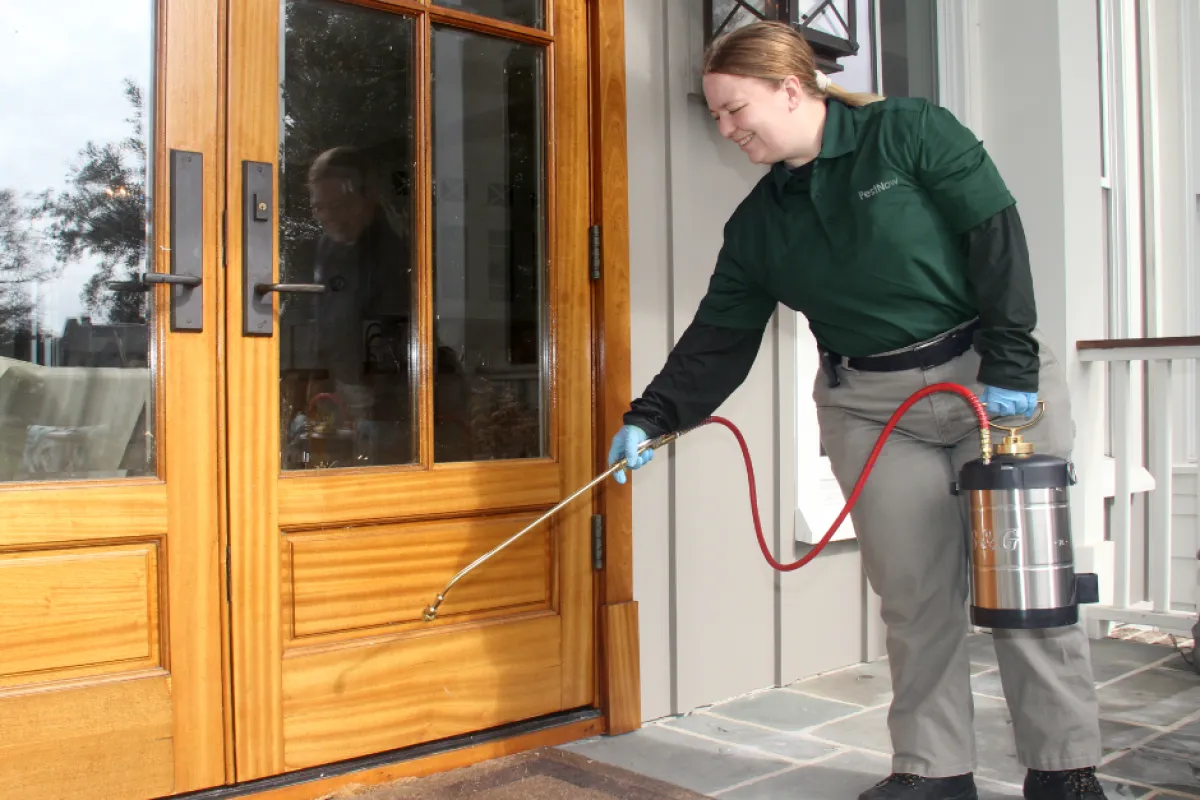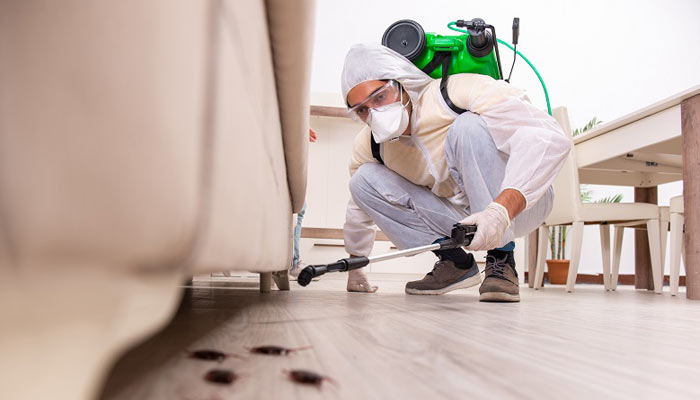Economical A1 Portland Pest Control Bed Bugs - Reputable and Efficient Solution
Wiki Article
Reliable Insect Control Solutions: A Comprehensive Look at Elimination Techniques and Avoidance Steps
In the realm of pest control solutions, the effective monitoring of problems calls for a thorough strategy that integrates various strategies and actions for both obliteration and prevention. From Integrated Insect Administration (IPM) techniques that prioritize sustainable remedies to chemical elimination strategies made for targeted removal, the toolbox against pests is substantial and complex.
Integrated Pest Management (IPM) Strategies
Integrated Bug Monitoring (IPM) Approaches include a detailed technique to pest control that focuses on prevention, monitoring, and control techniques to efficiently handle pest populaces. By integrating various strategies, IPM aims to minimize the influence of bugs while also reducing the dependence on chemical pesticides. Prevention exists at the core of IPM, highlighting practices like correct sanitation, upkeep of hygiene, and securing entrance indicate discourage parasites from infesting buildings. Tracking plays a vital function in IPM by consistently determining and evaluating pest levels to determine the ideal treatment limits. Control techniques in IPM focus on using physical, organic, and cultural strategies before transforming to chemical therapies as a last resort. These methods include presenting all-natural killers, habitat adjustment, and using capturing tools to keep insect populaces in check. On the whole, IPM promotes a sustainable and eco conscious technique to pest management, promoting long-term options that guard both human wellness and the community.Chemical Elimination Strategies
Chemical elimination methods are typically utilized in pest control solutions to effectively get rid of bug populations that position a threat to human health and residential property. These methods involve using various chemical compounds particularly designed to target and get rid of pests such as pests, rodents, and various other unwanted animals. The application of pesticides, insecticides, rodenticides, and other chemical representatives is thoroughly managed to make sure maximum effectiveness while decreasing dangers to human beings, family pets, and the environment.One of the essential benefits of chemical extermination strategies is their ability to give quick and targeted outcomes, making them particularly useful in situations of severe invasions or urgent pest control demands - a1 pest control in portland oregon bed bugs. Nonetheless, it is necessary to stress the relevance of appropriate handling, application, and disposal of these chemical items to avoid unintentional damage
Moreover, incorporated insect administration (IPM) techniques usually incorporate chemical extermination methods with various other techniques such as hygiene, environment adjustment, and organic controls to develop a extensive and lasting parasite control approach. By including chemical extermination strategies deliberately within an IPM structure, insect control solutions can successfully handle bug populaces while decreasing potential risks to human health and wellness and the atmosphere.
Biological Insect Control Methods
Utilizing natural killers and parasites to take care of insect populations is a lasting approach understood as biological bug control. This strategy harnesses the all-natural systems of the ecological community to manage bug populations without relying on synthetic chemicals. One usual organic control approach entails introducing natural opponents of the target bug types, such as ladybugs for aphid control or nematodes for termite problems. These natural predators feed upon the insects, helping to keep their populaces in check.An additional effective biological control technique is the usage of microbial pesticides. These are naturally taking place bacteria, such as infections, fungi, and microorganisms, that especially target and contaminate certain parasite varieties. By using these microbial representatives, bug populations can be successfully lowered without creating or harming valuable organisms damage to the setting.
Physical Insect Prevention Measures
Carrying out physical insect prevention steps includes utilizing barriers and architectural alterations to deter parasites from infesting a building or entering (a1 commercial pest control portland). One reliable approach is securing all prospective entrance factors such as voids around doors, windows, and energy penetrations. Mounting door sweeps, screens on windows, and sealing cracks in the structure can assist protect against insects like bugs and rodents from obtaining access inside. go to these guys Additionally, keeping a clutter-free and clean environment is crucial as parasites are brought in to food resources and hiding areas. Routinely inspecting and fixing any damaged screens, vents, or roofing tiles can additionally assist in keeping parasites out.One more physical avoidance measure is the use of barriers like secure fencing to maintain larger bugs such as deer or raccoons away from the residential property. By executing these physical bug prevention steps, property proprietors can significantly lower the threat of pest invasions and the damage they can create.
Specialist Bug Inspection Treatments
Conducting methodical and comprehensive parasite examinations is a fundamental facet of specialist parasite management protocols. Professional insect inspectors are educated to diligently analyze buildings for signs of problems, identifying pest varieties, access points, and review conducive conditions. The examination process normally starts with a comprehensive assessment of both the inside and outside of the premises. This entails checking for bug droppings, nibble marks, nests, and any type of architectural damage that may indicate bug activity. Additionally, inspectors might utilize specific tools such as moisture meters and borescopes to identify surprise problems within walls or crawl spaces.
Conclusion
Finally, reliable parasite control services employ a range of methods, including Integrated Pest Monitoring approaches, chemical elimination approaches, organic controls, and physical avoidance measures. Professional insect inspection procedures play a critical role in determining and attending to pest issues in a prompt fashion. By implementing a mix of these techniques, home owners can effectively stop and handle bug invasions.From Integrated organic termite control Bug Management (IPM) methods that prioritize sustainable remedies to chemical extermination techniques created for targeted removal, the toolbox versus parasites is diverse and substantial.Integrated Pest Management (IPM) Approaches encompass a thorough technique to pest control that concentrates on prevention, surveillance, and control techniques to properly handle bug populaces.Chemical elimination strategies are frequently used in insect control solutions to effectively remove parasite populaces that present a risk to human health and wellness and residential property.Utilizing natural predators and bloodsuckers to take care of pest populations is a sustainable method known as biological pest control.In final thought, reliable parasite control services utilize a selection of techniques, including Integrated Bug Monitoring approaches, chemical extermination approaches, biological controls, and physical prevention steps.
Report this wiki page